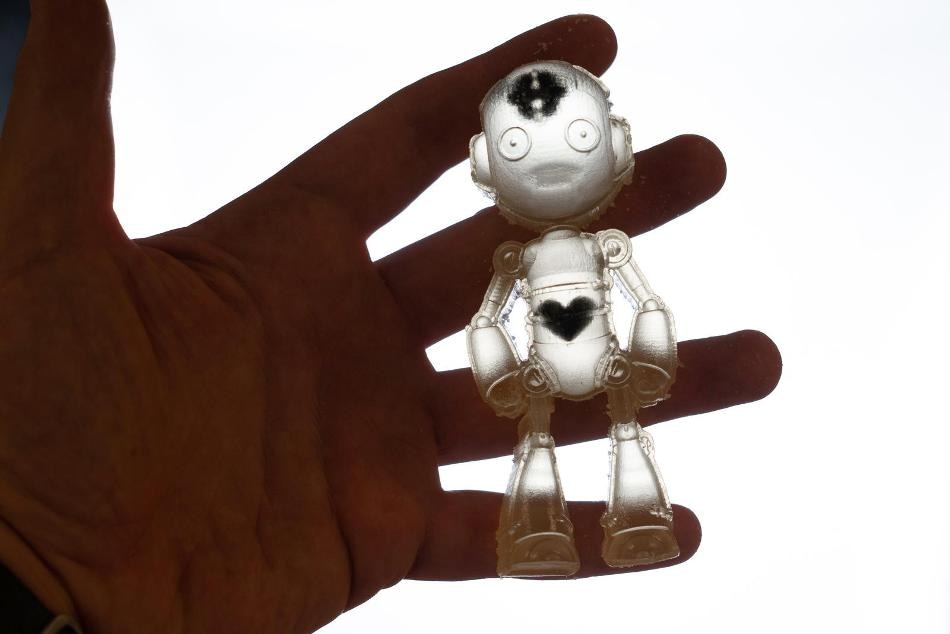Jul 18 2019
Robotics scientists at the University of California San Diego have for the first time used a commercial 3D printer to embed multifaceted sensors inside robotic grippers and limbs. But they realized that materials available in the market for 3D printing still need to be enhanced before the robots can be totally functional.
 Researchers 3D printed complex sensors embedded inside this robot-shaped prototyped. (Photo credit: David Baillot/Jacobs School at UC San Diego)
Researchers 3D printed complex sensors embedded inside this robot-shaped prototyped. (Photo credit: David Baillot/Jacobs School at UC San Diego)
Scientists who focus on 3D printing have envisioned making a complete robot in one print—a machine that would be able to walk itself away from the printer when it is printed. This would make the printing of more robots faster and easier. It would also make it feasible to 3D print robots without human control, for example on Mars or the moon.
One of the key barriers on the path towards this goal is the creation of effective sensors for soft robots. That is because soft, flexible robots mostly have complicated movements and intricate surfaces that are hard to equip and cover with sensors made using traditional manufacturing methods. These kinds of robots are more flexible than their inflexible counterparts and can safely work alongside humans.
The UC San Diego scientists’ understanding was twofold. They chose to work with a commercially available printer, (the Stratasys Objet350 Connex3—a workhorse in a number of robotics labs). Furthermore, they understood one of the materials used by the 3D printer is composed of carbon particles that can transmit power to sensors when connected to a power source.
Therefore, roboticists used the black resin to create complex sensors embedded within robotic components composed of clear polymer. They designed and produced a number of prototypes, including a gripper.
When stretched, the sensors failed at roughly the same strain as human skin. But the polymers the 3D printer uses are not engineered to transmit electricity, so their performance is not ideal. The 3D printed robots also require plenty of post-processing before they can be operational, including meticulous washing to clear-out impurities and drying.
However, scientists remain hopeful that in the future, materials will advance and make 3D printed robots fitted with embedded sensors a lot easier to fabricate.
“Embedded printing of sensors is a powerful process that could enable and enhance seamless integration of sensors into soft robots, but there does not yet exist a suitable, commercially available, easy to use platform that allows users to simultaneously print soft actuators and sensors,” the scientists write.
The team has published their findings in the latest issue of Frontiers in Robotics and AI. The research was funded by the Office of Naval Research and the National Science Foundation.
3D printed resistive soft sensors
(Video credit: University of California San Diego)